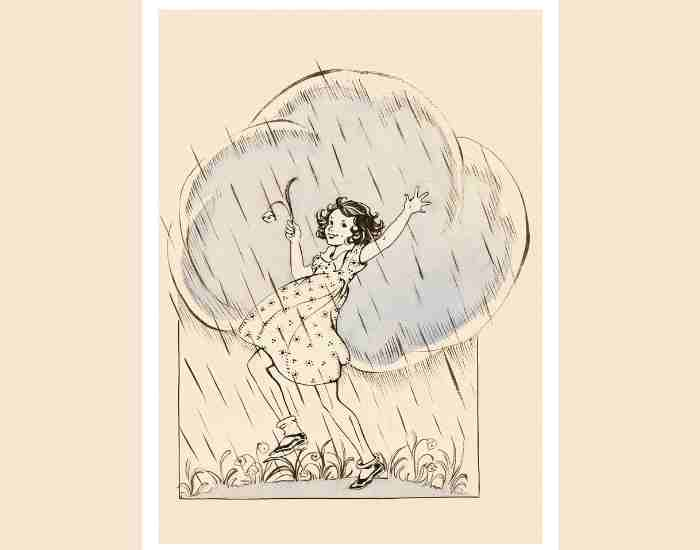If you are an aspiring artist, welcome aboard! Pencil drawing is not just an art form, it is a means of creativity as well as imagination. Whether you are a total noob or someone wanting to polish their skills, pencil drawing techniques can unlock a whole new opportunity of drawing beautiful materials out.
Pencils have been the most popular choice for artists all across the globe since it is the most handy tool an artist can ever use for anything. Right from basic outlines for bigger creates to detailed portraits, pencils are the most convenient medium. Setting up for using pencils requires minimum resources and drawings does have a lot of resources, so the cost difference is also significant. This kind of affordability, portability and ease of use makes this something every beginner should try.
Having said that, pencil drawing techniques although easier to a certain degree can be intimidating at first. Newcomers do in fact get discourage seeing ‘youtubers’ drawing something in a single stroke and that is where pencil drawing techniques clearly in need of a guide and that is exactly what this guide offers. A lot of techniques are provided so that the process of learning becomes easier and you turn out to be a pro in no time.

In this article, we will show you a number of techniques that can help improve your pencil drawings. If you are not quite sure how to create perspective, where to place shadows and highlights, or don’t know how to apply textures and details into your drawings, we have solutions for you. By the end of this journey, you will be assured of yourself and be able to brand any drawing that you wish.
Pencils and Basic Techniques
In the world of pencil drawing, as in most forms of art, it is important to start from the tools at hand. Let us vary these tools and learn about the types of pencils and the etching techniques which will help in setting the pace of one’s pencil drawing.
Diving Deeper Into Types of Pencils
Upon commencing one’s journey into the art of drawing, one will realize that there exist a huge variety of drawing pencils, each with a different grade of softness and hardness. One of them is the HB which sits at the center point on the scale, while on the other end sits the 4B pencil. The core of an HB pencil lies at the center point on the scale meaning it’s great for a variety of occasions whereas the 4B pencil, which is on the softer side, is best to use on occasions in which dark and deep tones are needed.
Being acquainted with these sorts of distinctions enables you to pick the most suitable tool for the specific need that you are trying to accomplish. When you need to create delicate outlines or thoroughly shaded details, having numerous pencils allows you to go for any artistic aspect that fulfills your needs.
Learning The Basics
So now that you have a variety of pencils at your disposal one might wonder which techniques might be useful to start with, this is where your pencil’s carving techniques come into play.
Line Variation
Lines are fundamental to any drawing because they provide the base for your work to develop. By altering line weights or adding textures, you create the illusion of depth. Also, because one can draw a confident stroke or a soft whispering touch, every inking stroke adds character to the piece created.
Shading and Blending
Simplicity gets instantly elevated through shading when you put two dimensions onto a piece of flat paper. Using a pencil and adjusting the pressure applied, an artist can achieve tones that range from the almost inaudible to the complete black. One technique, blending, causes elements to visually merge and covers the gaps, ensuring continuity. The ability to shade and blend properly raises your drawings from rendering a flower’s green pistil to creating a capturing landscape.
Embarking on Your Artistic Journey
As you begin exploring and trying out different pencils and techniques, I can assure you, your drawings will transform completely. Do not be afraid to explore, make mistakes, and learn from them. An important aspect that each artist should remember is that the beauty of a pencil drawing isn’t found in the end result, but in the practice of how to communicate visually.
Mastering Perspective and Depth
For those who pencil draw, learning perspective and depth is like finding ways of how to bring a world on paper into life. In this section, we will discuss the use of perspective and its importance while drawing and as well as approach of making drawings more volumetric.
Power of Perspective
Perspective comes as the basis for any realistic drawing in which space is a limited commodity and therefore the impression of distance must be created on a flat surface. Reading or drawing a picture whether a busy urban area or an quiet village, perspective must be appreciated in order to accurately portray how an object or several objects relate to each other in space.
Importance of Perspective
Perspective will not just dull your drawings but go a step further in heightening interest in your drawings and astonishing the observer. By cutting across these obstacles in your drawings and incorporating depth using foreshortening and vanishing points naturally draws the viewer into your world.
Techniques for Achieving Depth
Since we now understand the perspective more, let us look for techniques to make your drawings of something, appear thicker and deeper instead of flat.
Shapes and Their Depths
Creating an effective sense of depth is only a matter of overlapping shapes. No need to add complex elements. Simply put different shapes in front of each other and this will create a distinction between the foreground, middle, and background, adding depth to your composition.
Perspective Drawing Size Reduction
Smaller objects tend to be further away while larger objects are closer. This is known as the diminution effect. It can be captured by smaller elements going farther from the viewer and large elements getting closer to the viewer creating an illusion of distance.
Perspective Theory
In conclusion, termination points are quintessential toward the perspective viewpoint. These points on the horizon are essentially an imaginary point that captures the idea of all converging lines thus giving the objects a certain depth in the picture.
Draw in Perspective Patterns
Like all skills, perspective isn’t the simplest skill to learn, it requires practice and testing. Here are some useful activities that can help you in perspective drawing.
- Create what you see: Engage with your audience on that part of the world and try to create what you see around from multiple angles. Try to notice how the more an object is away, the smaller it gets and try to assist that in your drawings.
- Do Calligraphy Work and Paintings: It is important to study photos and paintings in which perspective is used productively. Examine how the artists changed the size of objects and their proportions while defining the vanishing points to add depth, and use hese techniques in your own drawings.
- Break the Rules of Foreshortening: An effect employed in decision making that gives perspective by changing the size of an image ie. making a component look smaller or closer is fore shortening, it usually adds sense of drama to the artwork. Try to use a model for drawing where it does not obscured by the hands, to better understand perspective drawing.
Fiddling with highlights and shadows
In this branch of art, pencil drawing, how to handle shadows and highlights is the holy grail, the ultimate secret that allows one to transform flat sketches into the beautiful cubes of artwork. It is time to move on to the fascinating world of shadows and highlights, and the technique that brings the best of your drawing.

The role of shadows and highlights
Instead of saying shadows and highlights, the ideal view would be to understand them as the darkness and the light, with one being the antagonist to the other complimenting the drawing, and visual artwork as a whole. Using light dark contrast to emphasize certain emotions, and themes within one piece of drawing, as well as a whole.
Creating Contrast and Depth
Using light as an illusion can allow one to capture the magic of reality in a drawing, all through the power of shadowing, to cast a focal point on an area and create depth. It is important to first learn shading techniques and understand how to paint a picture by not using color but just the absence of light.
Techniques for Rendering Shadows
It is important to first understand cross hatching, use of parallel lines in the asymmetrical direction to create shadows within a piece of work while allowing the lines to paint the more nuanced and finer aspects of the drawing. All of this combined gives birth to a masterful drawing that tells an enthralling story.
Stippling
Stippling is most general understood as shading and textures through dots or tiny illustrations on the paper. Adjusting the dots’ sizes, spaces, and quantity can enable one to create many types of textures and tonal ranges – from the faintest to the most prominent of variations.
Ways to Improve Shadow Casting
Realistic shadow creation is impossible without an understanding of light sources and how they can be manipulated. The following techniques can prove to be useful in drawing convincing descriptions of shadows:
- Look At the Shadows Outside: Try focusing on how light affects objects in the surrounding area. Observe how the shape and intensity of shadows alter depending on the position and intensity of the light source.
- Observe How Different Light Sources Affect Shadows: Try replicating the same drawing in different lighting e.g. daylight, candle, and electric light. Focus on alter qualities and direction of light casted on the objects and how it affects the shadows casted.
- Use Still Life Arrangements: Arrange simplistic still life settings with different lighting and shadows that can prove to be interesting in the final output. Focus on how shifting an object or light source can alter the size, shape or even direction of shadows.
Adding Depth to a Pencil Drawing
As regard to pencil drawing, it is also worth mentioning that texture and detail is one of the most important aspects of implementing a pencil drawing. With this one can explore more richness and depth to his or her drawings. Let us now explore the Cliff’s Edge of detail and texture and how these two elements can change your otherwise simple doodle into a beautiful piece of art.
Simply put, it can be seen that texture is a fun attribute to have in a certain piece of art. When drawing, it creates depth, realism, and most importantly interest in your piece. Be it drawing the rough bark on a tree, the smooth ceramic surface of a vase or even the soft fur on a kitten, texture speaks out and makes the viewer feel the piece instead of just looking at it.
Methods of Achieving Texture
As we noted previously respecting the dimension it texture has on a drawing, there are methods one can employ in their illustrations to achieve texture.
Stippling
Stippling is a quantitative application of dots/micro marks on paper with an aim of achieving a desired texture, tonal variation or shading. If you have some images in the dot’s texture, a five year old’s scribbles can be made out; to the pebble sized shapes on a rough stone, and the roots of a flower, every petal can be made through this.
Blending
Completely interchangeable with the term “moving” is the blending technique; a process assimilating pencil strokes and smoothing them until they become one uniform gradation of tone and texture. This effortless technique works wonders when reproducing the lively texture of the glossy surface of fruit or even the folds of silky fabric.
Exercises This is Where You May Want To Push Up Your Sleeves
Like most skills, practice allows one to improve and become the best around, this also applies for texture and detail. Try these exercises to refine your skills:
- Texture Studies: Pick out fabrics, metals and woods with different textures, and this will do as your first step. Take a clear picture of the focused object, gather textures of different tones and contrast, and bring it all together.
- Detail Drawing: Pick a topic that is detailed and requires intricate artistry such as a flower or an ornament. Look at the small details and the portrayal of textures on the object before moving onto the object’s reproduction by making eye of the same details.
- Texture Exploration: Use different approaches such as different drawing techniques and tools in order to achieve a smooth textured surface or a rough structure. Apply a combination of drawing, blending, and erasing to create the desired effect and do not let the limits of your imagination get constrained.
FAQs:
What is the best pencil to use for drawing?
When choosing which pencil to use for drawing Inks depends on a number of factors such as what you want to draw, the level of detailing and what the person wants to use. A few tips that may assist in finding the right pencil are given below:
- Hardness of the lead is an important area to consider: harder pencils like H pencils make fine marks that are effective for more delicate details while B pencils do the opposite and create details that are bolder and even more expressive.
- Try out different pencil grades. Experiment with numerous grades of pencils from HB up to 6B to identify what fits your needs best and also what complements your drawing style.
- Determine the kind of paper: Softer pencils may be needed while using rougher papers while sharp pencils would suffice on smooth papers.
- Look for color saturation: Some pencils have sharp and highly pigmented colors while some produce soft toned colors. Focus on the final outcome while choosing the pencils for your drawing.
What Strategies Can I Use to Take My Shading to the Next Level?
Shading is a core procedure in pencil drawing as it allows artworks to have depth and volume and appear realistic. Here are some ways in which you can progress in your shading techniques:
- Change the amount of pressure exerted and the direction of strokes: Change the amount of pressure and the direction of the strokes and observe how the resulting tone and texture change with different combinations.
- Blend it out: It is also important to use tortillons, blending stumps, or fingers to blend or smear pencil marks so that light and dark are incorporated softly without any abrupt edges.
- Cross-hatching and stippling thickens tone and texture. These are complex shading techniques where strokes are drawn in two or more different angles (cross-hatching) or dots or small strokes are made (stippled) to give color.
- Study light and shadow: You need to observe how the light works with things around you as well as observe pictures and art in which shadows are created and depicted.
How do I make my drawings have a realistic feel and texture?
Making one’s texture feel and look realistic calls for a precise sense of observation with regard to details. Here are some recommendations for making realistic textures on drawings:
- Look at textures in the real world: Set aside some time to observe the textures on several objects around you, textiles, wood, metals, skin. Note down even the slightest tone, pattern, and surface texture variations.
- Use various drawing techniques. Use different types of pencil strokes like hatching, cross-hatching, stippling and blending to create the textures that you see. Try layering and combining techniques to create a number of textures for smoother areas.
- Think about the direction of your strokes. The direction that the pencil moves or the stroke takes can determine what texture would be seen. For example, if a person wanted to create the appearance of smooth surfaces, then the drawing of the surface would involve the use of straight parallel lines.
- Use reference photos: When drawing textures, look at pictures, painted illustrations or physical things. Observe how light works with the material to recreate the highlights, shadows, and shape of the fabric in your drawing.
What are the mistakes that starting learners tend to repeat in their pencil drawing?
Practicing pencil drawing is all about time, effort, and details. Below are some mistakes that most pencil drawing beginners make, as well as how they can be avoided:
- Skipping pencil sharpening: Not sharpening your pencil blades can produce dull edges that will not be defined. Remember to have your pencils sharpened; this will prevent inconsistent edges or having to overwork your crafts due to the dull blade of the pencil.
- Too much pressure on the paper during drawing: A paper can get worn out from too much smudging, erasing or rough pressure which may create difficulties in smooth shading and create unwanted casts on the work surface. Try to refrain from frequent erasing and perform the drawing with a constant light grip on the paper.
- Underestimating the significance of value: As it pertains to tone, value measures the lightness or darkness of a tone. This fact also pertains to the depth and dimensionality of your drawings. It is somewhat understandable that beginners have a difficult time accomplishing such a complete value range which results in a drawing or more lifeless in nature. Proceed with practicing this by executing gradual lightening and darkening of the surface.
- Bypassing rough drafts: Any drawing work should have a clearer perspective or a rough draft. However, many beginners start details and shadows without first creating a sketch and an outline, due to which their core outlines lack reasoning. Try to complete that first by focusing on the emphasis of the images position and its proportion, together with the shape of the image of its outline.
How can I tackle an artist block while in the process of a drawing work?
An artist block is commonly known as creative block. Many people have this issue irrespective of their skill level. Given below are some pointers that will guide you in overcoming an artist block and will also help to get your creative juices flowing again.
- Find an alternative activity: There are plenty of alternative activities to pursue in order to tackle an active artist block And one of them is simply putting a distance between yourself and your drawing for some time. Read a relatively interesting book for pleasure, take some fresh air or simply do something creative instead.
- Experiment with new techniques: Trying out new ways of drawing, employing new materials, or using different subjects could aid in triggering your imagination, and in overcoming your creative block. Specialize in going beyond your comfort zone and looking in places that you are not familiar with.
- Seek inspiration: Look for things, people, or things that inspire you, such as art, the beauty of nature, or even music which bring forth ideas to your mind. Go to art exhibitions, window shop at galleries on the web, or peruse books and magazines to look for new concepts and ideas.
- Set small goals. Instead of focusing on your entire drawing project, focus on the stages by dividing it into reasonable parts involving a group of objectives. Ensure that you recognize the development made in the whole process and not just the completed final project.
- Embrace imperfection: Embrace the fact that mistakes will and do occur, and that achieving complete perfection is unattainable. Embrace exploration where mistakes happen, and give yourself permission to be wrong and not self-criticize.
Are there ways for me to increase my drawing skills in a short span of time?
Drawing as a skill can be broken down into technique and style. While the tips I am about to outline will not bring you immediate results or help you achieve all your goals overnight, they will however greatly reduce the amount of time you’ll need to achieve them. To begin with, one of the first prerequisites is regular practice – unfortunately, there are no shortcuts for this. It is worth reserving some time on a daily basis to simply practice drawing, after all, Rome was not built in a day.
To recap, here are three of the most general requirements. First off, mastering the fundamentals is important. This includes geometry, proportions, perspective, and composing pictures. Most teachers do not emphasize taking the time to learn these things but rather instruct on just how to turn a regular canvas into a piece of artwork.
Constructive critique can greatly enhance your growth and also ease your journey. Look at artwork of other people whether they are professionals or amateurs and assess their drawings. You’re more likely to receive such feedback from family, children, or artists with whom you collaborate and share your artwork. In addition to your current drawing’s insights, it would also be beneficial to listen to peoples’ opinions about how your earlier artwork could be improved.
Unraveling the power of detail, and the practice techniques of how to add depth and richness to each of your drawings.
Inspiration to Try and Deal
Ok, progress from where you stand! It takes time to perfect the art, so it would be unwise to think that one day of practice will suffice. The Practice has to be solid for improvement ultimately aiming growth as an artist. Stick to a practice timetable that can make you work on your art each day or in a week. Challenge yourself, do not let the walls of your imagination stifle you.
For instance, focus on combining multiple techniques, exploring different topics and materials and focusing on art more. Rather, with each sketch you make, take a step to gain more knowledge in art and challenge yourself. Try to learn from the mistakes that you make because everyone does make them and move closer to your goals.
A pencil drawing truly is one of the most beautiful forms of art as it can be practised and mastered by anyone, whether you are a professional or a sixteen year old. From a simple tool kit consisting of erasers, a paper and a number of pencils allows instructions to create great works of art that would appeal to everyone.
Pencil drawing is an incredibly versatile medium that allows you to express yourself wherever you are, so whether you are in the park or sitting on the couch, picking up a pencil is never a problem. Therefore, previously blank pages and the whole process of picking up a pencil should not be troublesome or bog you down. Rather, you make the vision’s ultimatum stand by embracing the sustainability of creativity and joy.
Put a pencil to a piece of paper so that you can join in on the fun of a wonderful journey of sketching your ideas. Completion of small goals during the whole journey be it sketching the required amount or enjoying watching the completed portrait elevates the fine sketching experience.





